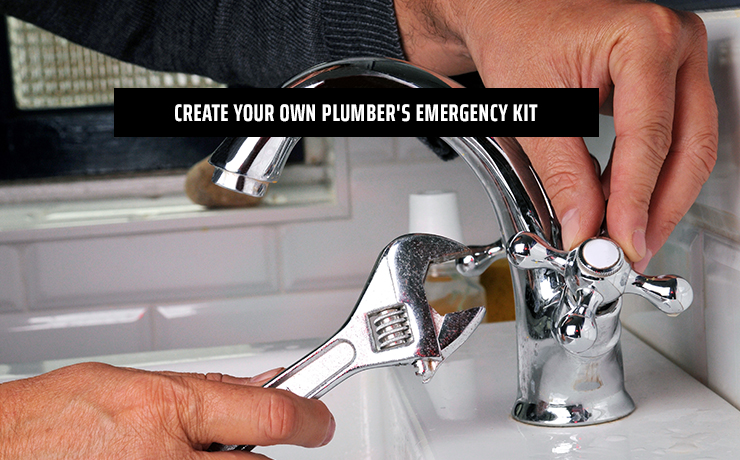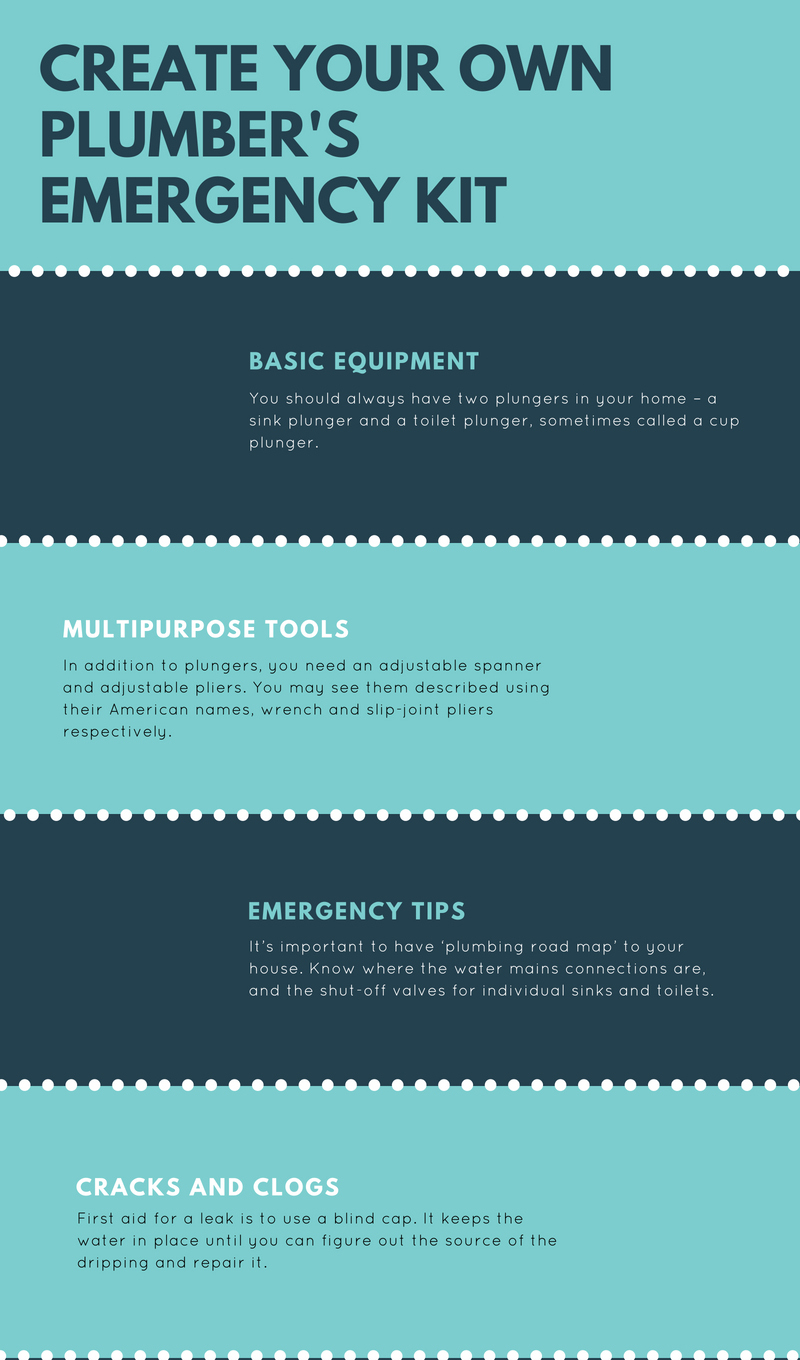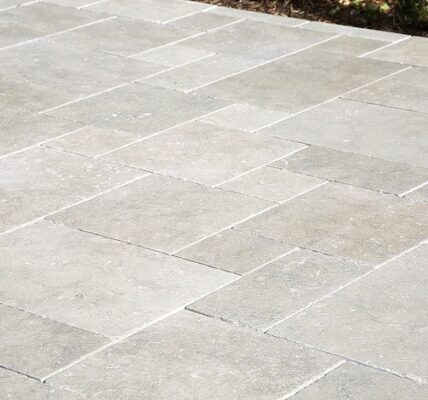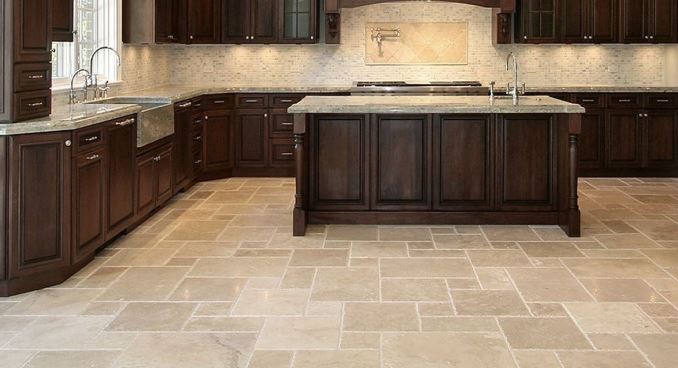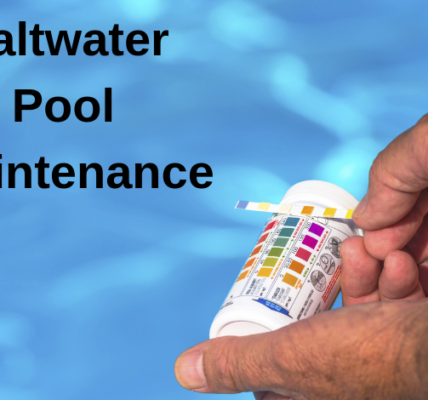Plumber’s rates are quite high. Their work is complex, highly skilled, and in demand, but they also resolve a lot of messes that we’d probably rather not have to deal with ourselves. That said, it might help if you can buck up and handle at least some of your own plumbing. It will save you a lot of money, and you’ll be quite proud of your achievements because there’s a certain immeasurable pleasure from working with your hands.
Start by putting together your own plumber’s emergency kit. Think of it as a first aid kit for your kitchen sink, toilet, or bathroom. There are some minor plumbing difficulties that you can fix on your own, and you can always find a tutorial on YouTube. Your emergency kit will also contain basic tips on handling some of these minor plumbing problems. However, there are other situations where you’ll need to call in a pro, like a malfunctioning heater or an inaccessible burst pipe.
Basic Equipment
You should always have two plungers in your home – a sink plunger and a toilet plunger, sometimes called a cup plunger. The difference is the toilet plunger has a flange extension at the end. The flange holds the curve in the toilet bowl more securely, blocking off air and giving you more suction. Even if you have a tool box, when you’re dealing with a plumbing issue, use a 20 litre bucket as a temporary hold-all for your tools.
The bucket will give you easier access than the tool box, and it can also hold any overflow from your leak. If you want, you can use a tool organiser, which the Americans call a tool caddy. It’s a bit like a tool box, but it has an open top, so you can get to the tools more easily. You can buy one at any hardware store, or make one at home. Plumbing tools should be waterproof and rustproof, so make sure you buy the right quality to avoid corrosion.
Multipurpose Tools
In addition to plungers, you need an adjustable spanner and adjustable pliers. You may see them described using their American names, wrench and slip-joint pliers respectively. Two more multipurpose essentials are hex keys and multipurpose screwdrivers. Hex keys are more commonly known by their most popular brand, Allen. So you might find Allen keys labelled as Allen wrenches, or multipurpose screwdrivers described as multibit screwdrivers.
It helps to know the American names of these tools, in case you’re shopping online and end up lost in translation. Finally, you want some duct tape and insulation tape, or as they call it, leak sealing tape. You could also get a spool of plumber’s tape / Teflon tape, and blind caps in assorted sizes. Both the tape and the caps are essential for working with leaks. Don’t forget to have a stockpile of paper towels and absorbent disposable media.
Emergency Tips
It’s important to have ‘plumbing road map’ to your house. Know where the water mains connections are, and the shut-off valves for individual sinks and toilets. Once in a while, turn the shut-offs(isolation valves) to ensure they still work. If they stay unused for too long, the taps could get stuck in place and you’d need pliers or a spanner to dislodge them, so turn the valve off and on again … or on and off again, depending on its usual position.
When you’re resolving a plumbing issue and the water is at high pressure, use two spanners, pushing them in different directions. This allows the spanners to act as shock absorbers, relieving the pressure off the piping. The technique is called ‘backing off’. When you begin any plumbing task, your initial tool should be pliers, not spanners. Use the pliers to loosen the nuts first, then get the adjustable spanner to finish off.
Cracks and clogs
First aid for a leak is to use a blind cap. It keeps the water in place until you can figure out the source of the dripping and repair it. The leak may be caused by worn out threads, or by a scratch or dent in a supply pipe. Plumber’s tape is a good temporary fix. Cracked pipes can be held together with insulation tape for a little while.
For clogged sinks, drains, or toilets, start with a plunger then progress to a toilet snake. If your blocked sink has two drains, use two plungers. The second plunger should cover the drain that you’re not plunging, so that the force pushes the blockage down instead of pushing it up the other drain.
If the clog is in a bathtub, remove the drain cap so you have a clearer view of the blockage, You can then pull out whatever is blocking it (probably hair), or use the plunge to push it further down into the sewers. On the other hand if you’re repairing a garbage disposal or a tap, Allen keys are more helpful than screwdrivers or spanners.
Read More:
